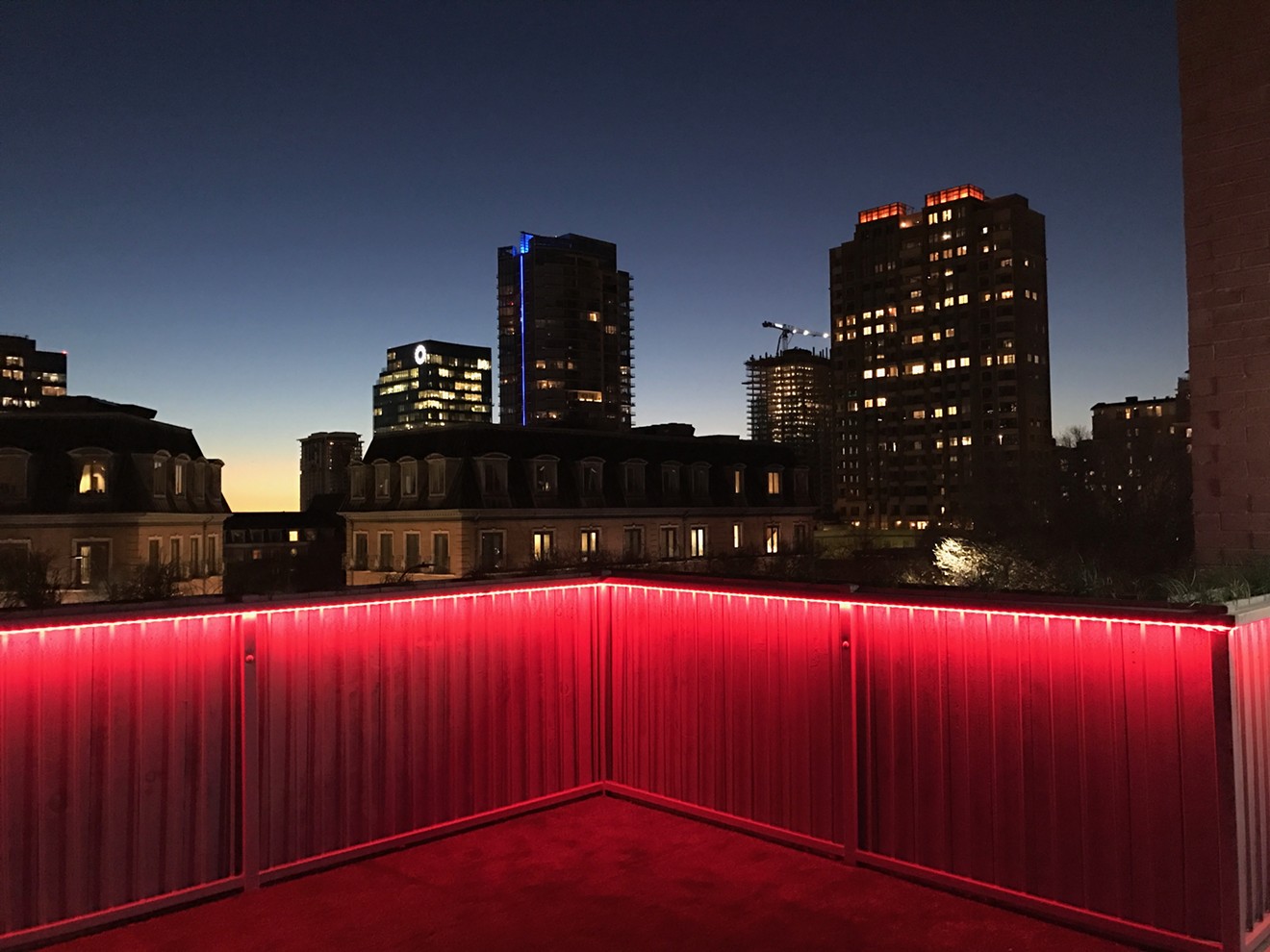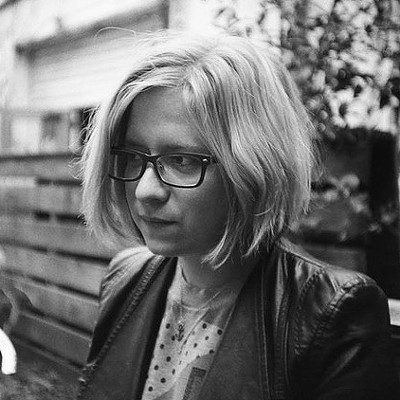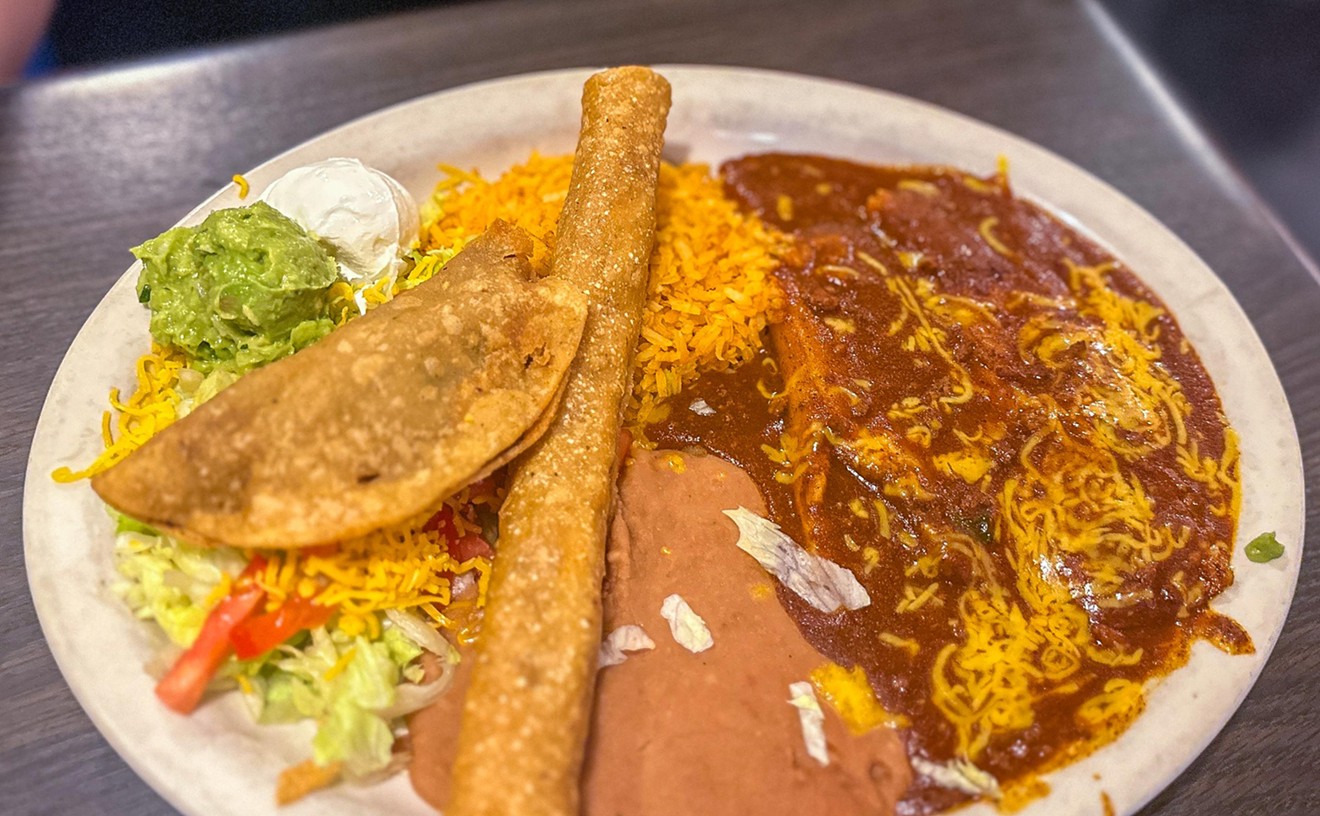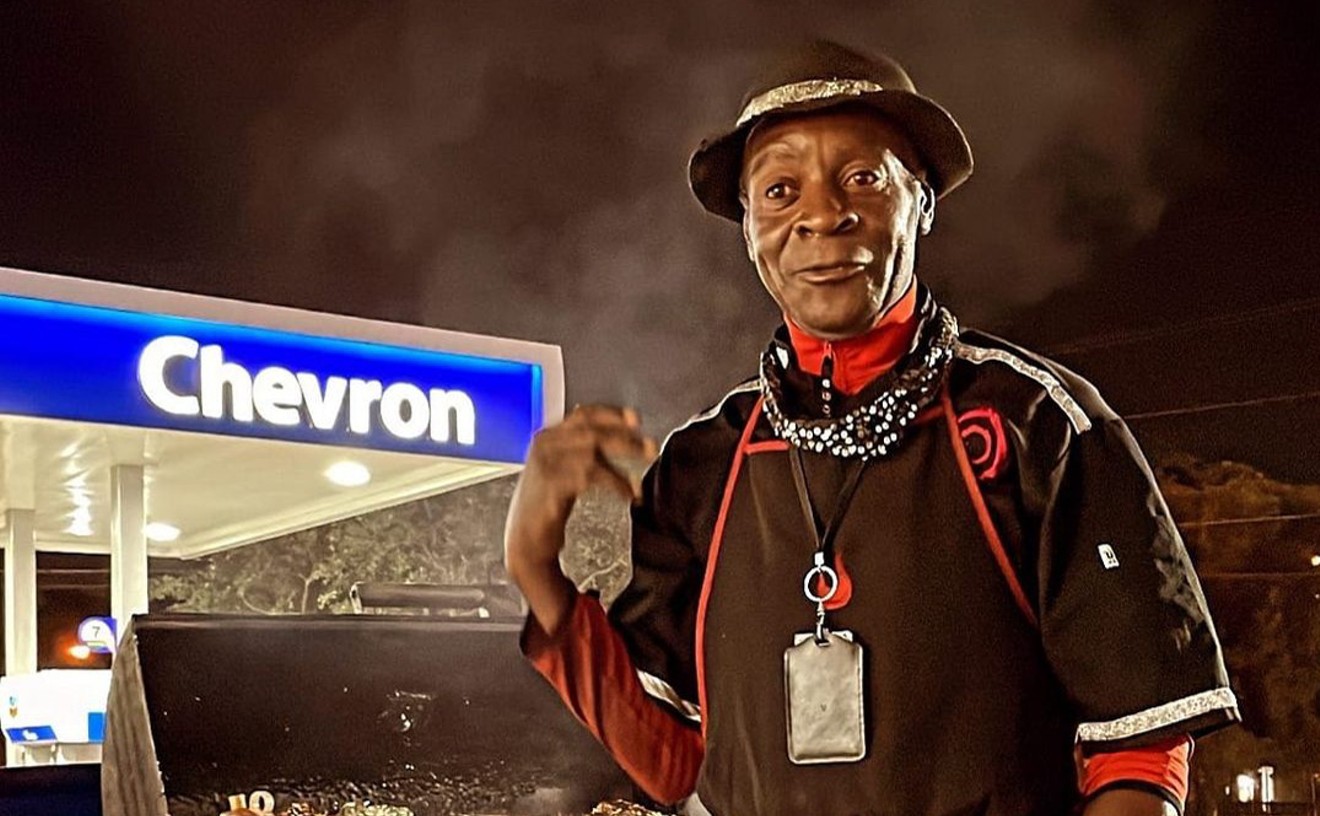Electronic music thumps quietly in the background, and friendly servers traverse the dark space, explaining Nikkei’s concept: Japanese fare with Peruvian influences, a nod to the diaspora that led so many Japanese people out of their homeland. Toward the back of the space, a set of stairs leads diners to a rooftop patio where they can sip cocktails while they watch the sun set behind the Crescent — a stunning Dallas view if ever there was one.
I like kinda-hidden restaurants. I like walls covered in art and glowing neon lights and bright jewel-toned accent colors. I like electronic music and rooftop patios with a cool view. I like intriguing concepts like Japanese-Peruvian fusion.
But Nikkei, like a growing number of Dallas concepts, doesn’t feel like the kind of place that makes you want to come back for more.
Once again, Dallas has birthed another bar-restaurant concept where the food itself feels secondary to the concept, where selfie stations are positioned strategically and bottle service prices reach into the thousands, but even after dropping more than $100 on dinner, you walk away talking about the vibe rather than the food. Of the dozen dishes and drinks sampled one night during opening week of Nikkei, I can recall no flavor that I truly yearn to experience again.

The dining room at Nikkei feels far more suited for a nightclub than a serious dining establishment, but this isn't the only restaurant to succumb to the nightclub-restaurant trend.
Beth Rankin
If you, too, make less than $50,000 per year in a city like Dallas, it’s hard not to feel a little left out of the current wave washing over the food and drink scene. There’s nothing wrong with expensive restaurants — not everything need be for everyone — but it’s beginning to feel as if a selfie-obsessed trend-monster is swallowing the Dallas food scene whole. The concepts are getting more convoluted, the music louder and the lights dimmer, but while the food and drink get more expensive with every new opening, the flavors become less and less memorable. The rooftop patios and ambiguous neon-lettered expressions hung just to entice the Instagrammers are starting to feel like the point, rather than the amenities.
There’s some serious talent at the helm of Nikkei. Milkshake Concepts, the group also behind Stirr, describes itself as “an experiential hospitality group,” and that certainly seems accurate. Much like Stirr, a see-and-be-seen restaurant and rooftop bar that feels tremendously out of place on its corner of Deep Ellum, Nikkei’s experience is as over-the-top trendy as they come. But with chefs Ross Demers (formerly of On the Lamb) and Nick Harrison in the kitchen — and with a concept as curious as Nikkei’s — our attention had seriously been piqued. A press release explaining Nikkei describes the food as “exotic yet approachable Japanese Peruvian fare.” Having paid $17 for five oysters dotted with cactus pear gelee, I can’t help but balk at the use of “approachable.”
I tried five dishes at Nikkei, including Oysters Ponzu Buena ($17), Miso Black Cod ($18) and the Texas Wagyu ($22). The oysters were lovely — tiny, delicate Beausoleil oysters speckled with cactus pear gelee — but, at $17 for five, not delicious enough to justify ordering again. The Miso Black Cod, with purple potato puree and Huancaina, a creamy, cheesy sauce, was intriguing in concept but in flavor was all over the place. The starchy purple potatoes combined with the miso’s umami and the almost cheddar-like cheese sauce, when combined with the freshness of the cod, created a flavor profile so complicated, it made my head hurt.
The greatest bite came from the Black Garlic Salmon ($16), made with marinated salmon roe, radish and sweet plum butter; it proved to be the most memorable dish, combining creaminess and savoriness and a beautiful bit of brine.

The Keep It Clean ($12), Nikkei’s take on a martini made with house-pickled vegetables and served in glassware that’s more baffling than useful.
Beth Rankin
Matt Odam, food critic at the Austin American-Statesman, may as well have been writing about Dallas in his recent review of Eberly.
... over the past couple of years, as rents and taxes have leaped and kitchen talent has thinned, there has been a shift to restaurants opened by people with deep pockets who don’t think like chefs. They think like businessmen and club owners. They seemingly worry about aesthetic, design, attracting a certain crowd and creating spaces that look cool but feel empty.
We’ve stumbled from chef-driven restaurants to vibe-driven restaurants. Dining out becomes less about a shared appreciation of craft, flavor and community and more a form of effervescent entertainment and stylized spectacle. These new places, some of which likely cost millions to build, feel like they were made specifically to host parties for glossy magazines and drive traffic to websites fawning over the ‘stunners’ and unsubstantiated new ‘classics.’
At Nikkei, even their take on a martini is served in a cone-shaped glass served inside of a ball-shaped glass of ice — a clunky, impractical vessel that feels like a metaphor for the restaurant. It may look cool, but the substance just isn’t there.
As evidenced by Odam’s recent piece in the Statesman, this problem is not Dallas-specific — it’s everywhere, and it’s getting worse with every passing year. The Dallas dining industry has had a rough few months, with some seriously high-profile closures, and if there was a brief hesitation about over-saturation in the industry, those fears seem to have already been forgotten. My greatest fear isn’t that we’ll have too many restaurants; it’s that, as more and more restaurants turn into dark, thumping dens with $7,000 bottles of Louie XII, we’ll forget the real reason why our dining scene exists in the first place: to feed people.












